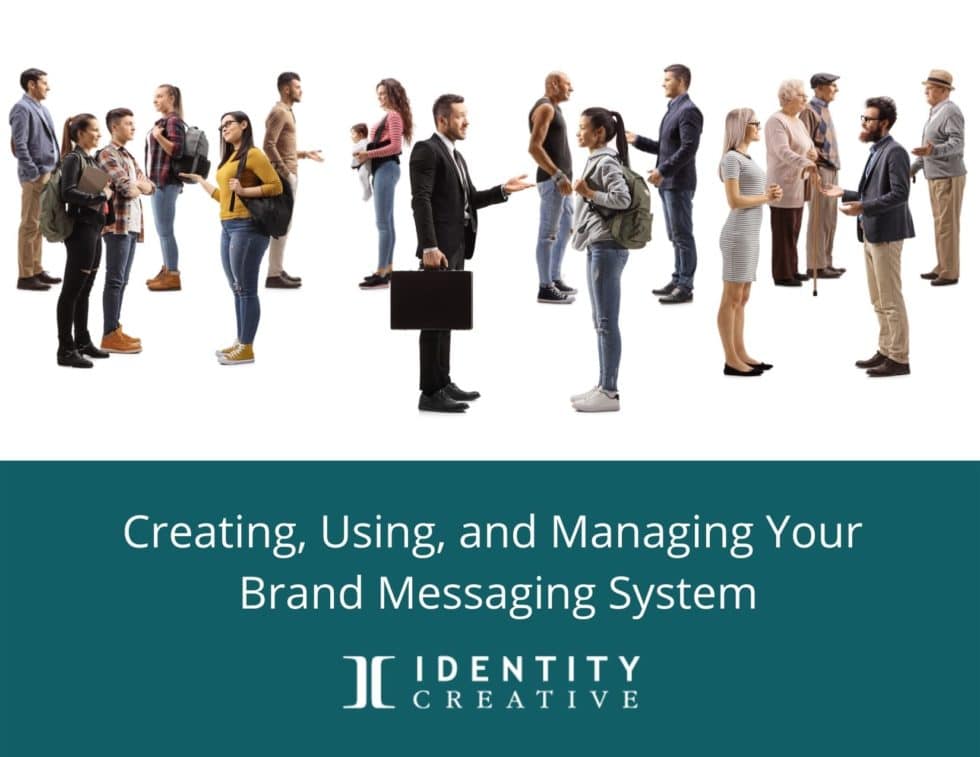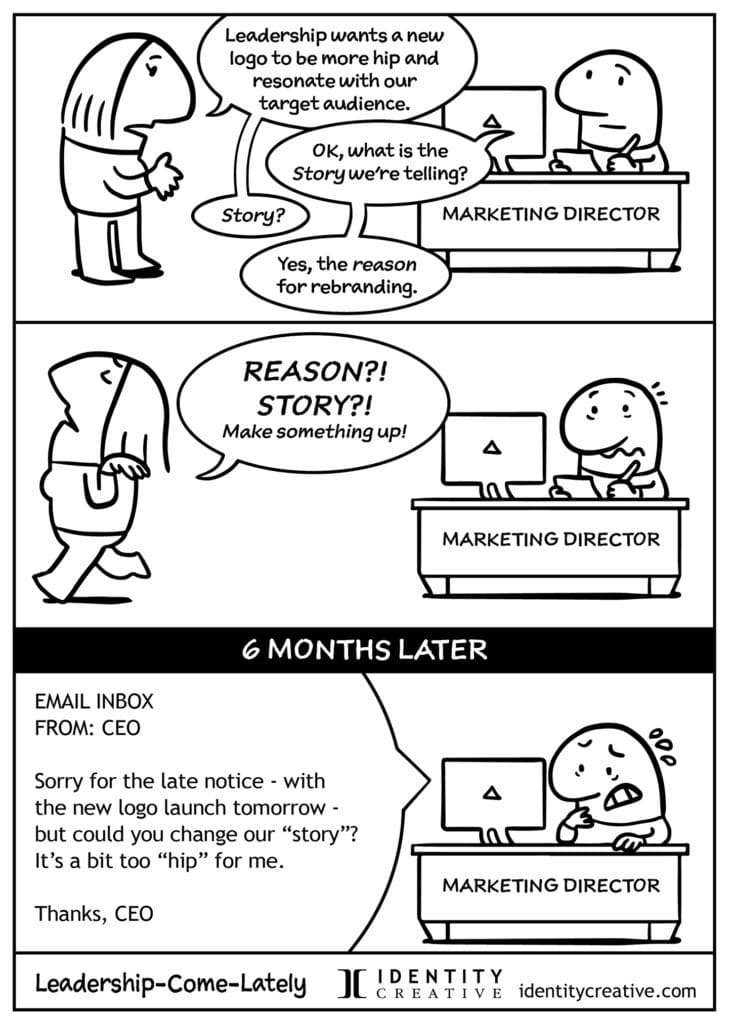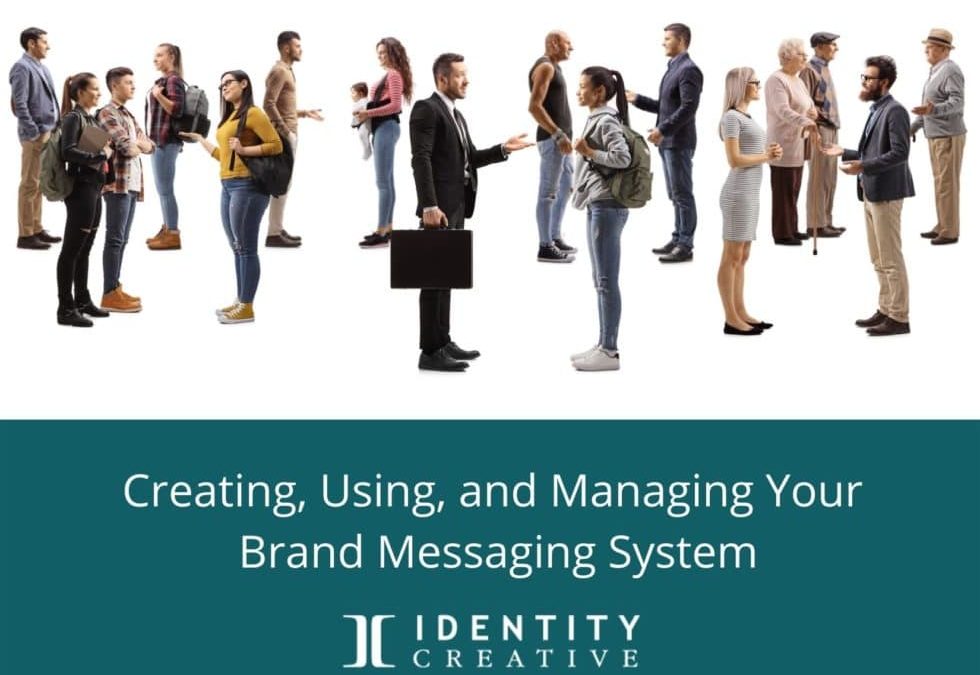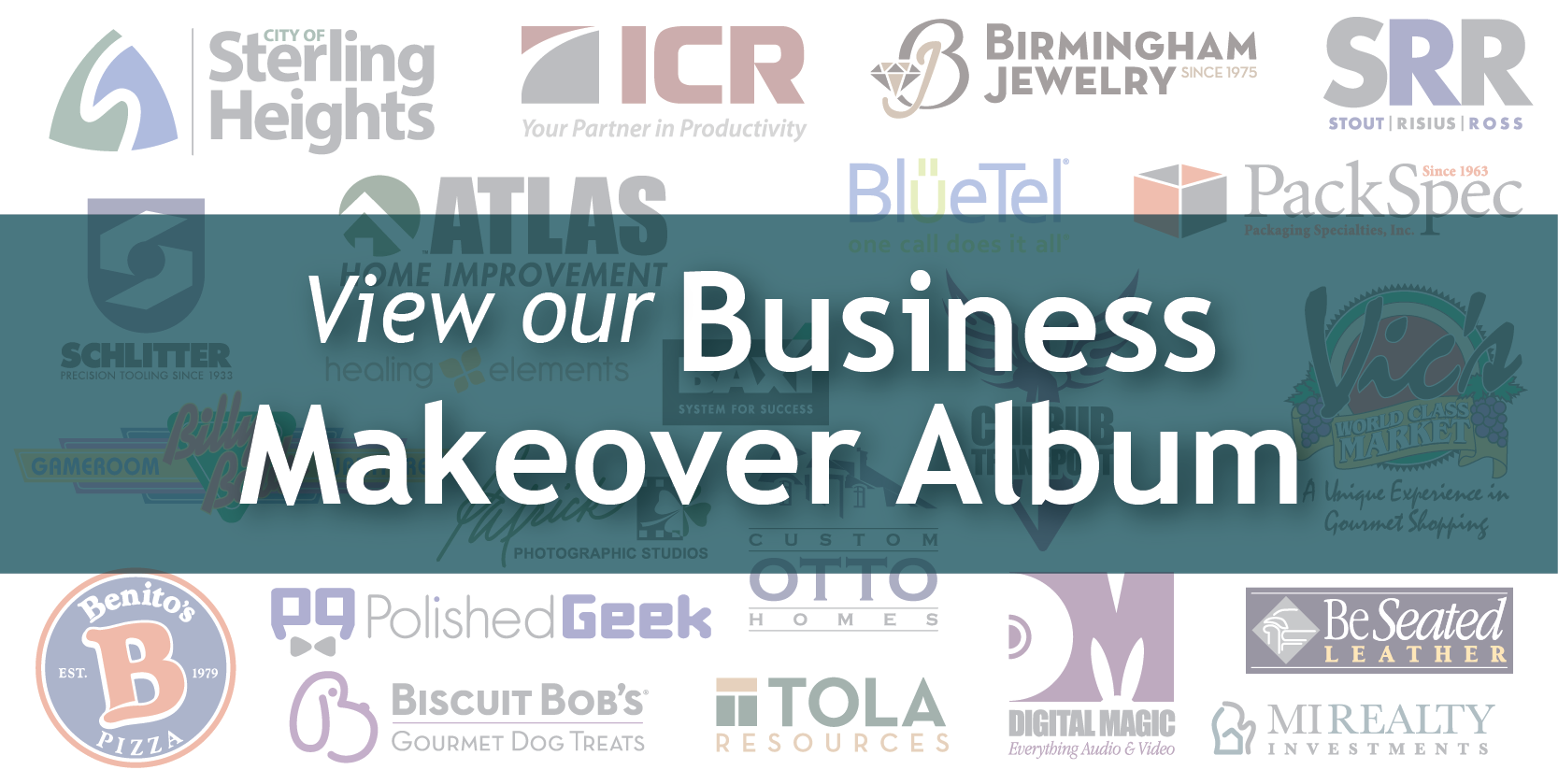
Brand messaging is like currency. It’s worth something. So, how are you creating your message, and how will you “spend it?”
Just as with creating and managing financial assets, there are rewards and minefields to creating and managing your brand message.
It’s essential to get it right because your brand messaging is vital to building a credible brand. Investing time in creating, using, and managing your brand messaging system will enable you to attract the people you seek to serve.
The Stakes Are High
The high cost of not creating unique brand messaging may not be immediately recognizable. Don’t let your brand get lost in a marketplace fog: quickly and consistently connect with your customers!
Definition of Brand Messaging
Before we go any further, let’s define “brand messaging” and why it’s so important.
There are likely as many ways to define and create your company’s brand messaging as there are marketers. How you create your brand message will be impacted by your philosophy of marketing.
For some, marketing is finding clever ways to manipulate others for the desired outcome. For others, marketing is how they share value to find and connect with their ideal customers.
Brand Message – Noun
A brand message is the carefully selected words that communicate your business’s unique solution to your customer (which defines your market).
Brand Messaging – Verb
Brand messaging is infusing your brand message in everything your business does.
You will use brand messaging everywhere: in your slogan, your salespersons’ elevator pitch, your customer service representative’s vocabulary, your website copy, ad campaigns, and the CEO’s toast at the company anniversary bash.
What are you selling, who will buy it, and why should they care?
You want to connect with the people who have a problem or need that your solution will satisfy better than anyone else.
You also need to be trustworthy.
Consistent brands are more readily trusted. A massive advantage of investing the time to create an authentic brand messaging system will be that it is infinitely easier to maintain consistently.
Make first impressions authentic.
What will be the first impression someone has of your brand? Is it landing on your website, meeting a salesperson, or seeing a billboard? How will the message and experience differentiate your company from others?
“Building a true, sustainable customer relationship is the biggest competitive advantage in the world.”
– John DiJulius, The Customer Revolution Podcast
Getting the first impression right everywhere requires consistent brand messaging. This challenge is made exceedingly easier when your business is its authentic brand-self. So how do you create an authentic brand message?
Create Your Brand Messaging System
Creating your brand messaging system can be divided into three phases. First, codify the abstract pieces of your brand. Second, see your solutions from your customer’s perspective and gather the words they use to describe their problem. Third, craft evergreen copy that will be infused into your business, from operations and billing to marketing and customer service.
1. Create Your Brand Blueprint
What is a Brand Blueprint? Our customers are small businesses with generally less than 100 employees. They needed a way to codify the abstract pieces of their brand and put them into practice. The Brand Blueprint is a foundational tool to guide their business strategy. Authentic marketing starts here.
The Brand Blueprint puts the heart of your brand on one page.
People make up your business, and you sell to people. The Brand Blueprint outlines the pieces of your brand people connect with, including Purpose, Mission, Vision, Core Values, Slogan, Descriptor, Key Differentiators, Compelling (Customer-centered) Elevator Pitch, Brand Promise, Customer Service Commitment. It can even tell the story behind the symbolism in your logo!
2. Complete Your BrandScript
The BrandScript is a genius way to help you get outside your industry-jargon-filled brain and into the mind of your customer. It includes the essential ingredients marketers need to create compelling brand messaging for your marketing collateral. You’ll have a clear message so people can quickly absorb the transformation you make.
The work you did to create your Brand Blueprint will make this step much easier.
Created by Don Miller, MyStoryBrand is a tool you can use on your own or with a facilitator. We use it. It’s a fun and enlightening way to build a framework for our clients’ marketing messages.
3. Write Evergreen Copy
Evergreen copy means that this messaging won’t change with the seasons. For a start, use your BrandScript to create three sentences.
– One clear sentence about your customer’s problem.
– One clear sentence about the unique way you solve that problem.
– One clear sentence about the transformation your customer’s experience.
Then take these sentences and combine them into one shorter sentence for your elevator pitch.
We call this your 16-Second Story. Compellingly, it tells people who your customer is, what they’re struggling with, and how you uniquely solve it, transforming their world with a happy ending.
Sound too simple? It isn’t easy to simplify all the great benefits you deliver for your customers. But if you’re too wordy and your messaging changes with the seasons, your brand messaging foundation will be like shifting sands. Do the hard work to narrow your niche and message. Be clear and win.
“Your customers will buy the destination, not the plane.
Focus on the transformation you offer, not how you provide it.”
– Lisa Sasevich
- Organize and Use Your Brand Messaging System
Once you’ve created your foundational brand messages, you want to use them effectively. Everyone on your team needs to know your primary message. Your team’s buy-in is a vital ingredient to integrating a consistent message into every level of your brand.
1. Organize your copy for easy reference.
Organizing your brand messaging will be similar to setting up your brand image library.
The Brand Blueprint, BrandScript, and evergreen copy become your go-to reference tools. How this works for your business will depend on many factors.
You can refer to our post on managing your brand assets for more on this.
2. Consistently place slogans and descriptors on all your collateral.
If you don’t have a brand identity standards guide, get one! You’ll need a graphic designer who understands brand architecture and how to build a logo file system.
Your brand identity system will anticipate every potential use and placement of your logo, descriptor, and slogan.
Here’s an example of a logo with and without a slogan from Petrous Orthodontics (An outstanding metro Detroit area orthodontist!).

Petrous Orthodontics Logo – Without Slogan

Petrous Orthodontics Logo – With Slogan
3. Reference your evergreen copy for consistent key messages on all your collateral.
As your brand messaging is expanded to all your marketing collateral, develop a system or appoint your C.B.O. (Chief Brand Officer) to keep the messages on brand.
Evergreen copy saves a tremendous amount of time, and it’s a gift to your marketing team. Even if it’s simply on a word doc, having your messages on hand is like a well-stocked refrigerator when you’re hungry.
Whatever marketing endeavor, from creating a new sell-sheet to writing a script for a promo video, you can open the file and grab your well-written and compelling brand messages. Oh, the joy of a consistent brand!
 CAUTION! Brand Messaging Minefields, Traps, and Snares
CAUTION! Brand Messaging Minefields, Traps, and Snares
- Boredom – Marketers get bored before their audience does. Brand messaging A.D.D. is when your team is prone to taking off on another marketing tangent.
- Following – Be your brand. Resist the temptation to compare and copy your competitors.
- Shortcuts – Coupons and sales, gimmicks and Groupons. There is a place for these in retail marketing but use them sparingly. Don’t train your customers to wait until the price goes down.
- Disorganization – Consistency suffers when your brand messaging is not organized and accessible. Get organized and stay the course!
Manage Your Brand Messaging System.
Annually, set up an undistracted time annually for the marketing director and the leadership team.
Review your messaging in light of external and internal factors, such as product improvements and industry advancements. Ask the tough questions and determine whether you have slid into a brand-messaging-drift.
Update messaging system with a well-thought-out copy (not on impulse–see trap #1 above).
The marketing director needs to have the power to push back on the leadership team. When something new and shiny comes along, your C.B.O. needs to be able to pull the reigns. However, if your C.B.O. is prone to Brand Messaging A.D.D., get that out in the open and work together to keep your brand message consistent and clear.
Engage Your Leadership Team in the Endeavor.
Creating the foundation of your brand messaging strategy is not solely the job of your C.M.O. or marketing director. It’s the leadership that determines the mission, vision, values, key brand differentiators, and the promise we make to every customer.
Leadership is responsible for keeping business strategy and brand messaging aligned. Ideally, it is their privilege and duty to be consistently repeating the brand message.
Armed with a strong Brand Blueprint and BrandScript, the C.M.O. can execute creatively with the authentic brand messaging that is being lived out–from the top down.

Hire a Consultant to Help You Create Your Brand Messaging System.
Whether you have an in-house marketing team or are a sole proprietor, you could gain a significant advantage by bringing in an outside resource to help you develop your brand messaging system.
An outside professional branding team will bring a fresh perspective to your business and your customers. They can facilitate workshops that go deeper with meaningful phrases (without industry jargon and clichés) that will carve out your unique spot in the marketplace of brands.
The words we use will communicate a message. Make your brand messaging clear, repeatable, and compelling. It will be a currency in language that you can bank on!



 CAUTION! Brand Messaging Minefields, Traps, and Snares
CAUTION! Brand Messaging Minefields, Traps, and Snares


Trackbacks/Pingbacks